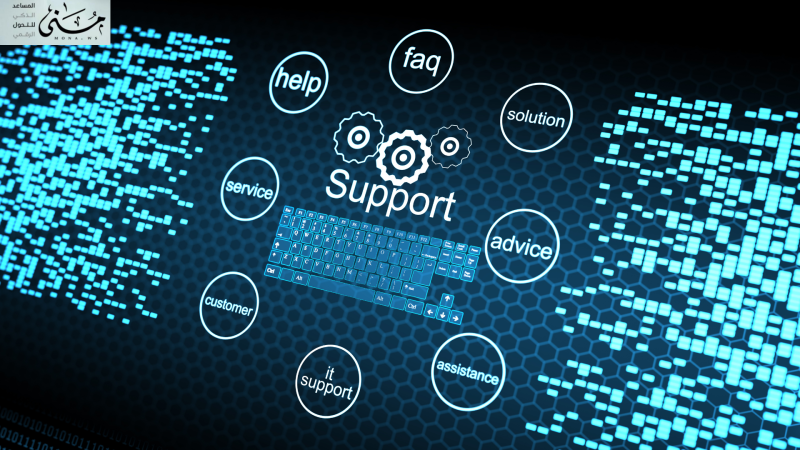In modern business environments, managing senior meetings and board meetings has become one of the most important tools for establishing good governance principles. These meetings are no longer just an opportunity to exchange views; they have transformed into a true platform for strategic decision-making, ensuring transparency, and enhancing corporate compliance. However, many organizations fail to realize the true value of managing senior meetings due to a lack of proper planning, a failure to document decisions, or poor follow-up on their implementation.
Today, with the proliferation of digital solutions like DocSuite Meetings, it's possible to transform senior meeting management into a professional, enterprise-grade experience powered by accurate data, intelligent scheduling, electronic voting, and full documentation of every recommendation and decision.
The importance of managing senior meetings in the governance system
Managing senior meetings plays a key role in setting the course of an organization and ensuring that major decisions are subject to collective oversight. It allows for the distribution of powers, allows stakeholders to participate in decision-making, and gives everyone the opportunity to be informed transparently about developments:
Attendance and membership control
One of the most serious challenges in managing senior meetings is the lack of governance around attendance. The rules for inviting members must be clear and based on approved policies that define who has the right to vote and who participates in an advisory capacity.
Systems like DocSuite provide the ability to electronically record attendance and link it to membership records, ensuring that only those with the correct legal authorization attend the meeting.
Clearly schedule the agenda
Successful senior management is unimaginable without an organized agenda that allocates time fairly and prioritizes according to importance. A good agenda doesn't just list items; it sets a specific goal and expected outcomes for each item.
Here, digital systems like DocSuite help you design a dynamic agenda, send alerts to members, and display relevant documents in advance, saving time and preventing chaos.
Documenting recommendations and decisions of the Board of Directors
The recommendations and decisions resulting from senior management meetings are the soul of governance. Without proper documentation, no one will be able to follow up on implementation or review the soundness of the decision later.
DocSuite Meeting provides the ability to record decisions and recommendations electronically, linking them to meeting and voting minutes, making it easier for any regulatory or internal body to review the decision's history and stages.
Smart Administrative Voting Mechanisms
A fundamental part of modern senior management is the use of accurate and reliable electronic voting mechanisms that reduce the chances of manipulation, ensure rapid decision-making, and maintain documentation of the results.
Electronic voting can be linked to authority levels, so that only those with decision-making authority within the administrative structure can vote. DocSuite also allows for automatic voting percentage calculations and instant results reporting, making senior meetings more fair and transparent.
Follow up on the implementation of decisions after the meeting
Meetings often end with excellent decisions on paper, but they are later lost due to the lack of follow-up mechanisms. Therefore, the essence of truly managing senior meetings is only complete with a clear plan for follow-up, linking decisions to tasks, and assigning precise responsibilities for their implementation.
DocSuite solutions allow you to track decisions immediately after they are approved by linking them to tasks in the system, setting clear deadlines, and sending periodic notifications to managers. This creates a closed governance cycle that begins with discussion and ends with implementation.
How does DocSuite support senior meeting management?
It would not be an exaggeration to say that DocSuite represents a real transformation in the concept of meeting management, as it achieves:
- Securely and searchably archive meeting minutes
- Document every decision and recommendation and link it to a clear voting record.
- Schedule meetings and send invitations electronically
- Follow up on tasks resulting from decisions in real time
- Preparing performance indicators reports on meeting attendance and commitment to implementing decisions
These capabilities make the management of senior meetings more transparent and efficient, and enhance the organization's compliance with good governance standards.
The importance of linking senior meetings to corporate governance
Senior meetings should not be viewed in isolation from other governance components. They represent the organization's interface with stakeholders and the community, and they establish laws and policies and direct departments. Therefore, accurately applying governance standards to meeting management reflects on the organization's reputation and enhances confidence in it.
Meetings conducted according to a clear agenda, with a fair voting system and transparent documentation directly contribute to building an honest corporate image and making internal and external oversight more effective.
Common Mistakes in Managing Senior Meetings
Despite the importance of meeting management, there are common mistakes that some organizations make, including:
- Lack of a precise agenda
- Poor documentation of session minutes
- Neglecting to follow up on the implementation of decisions
- Lack of clarity of members' roles and powers
- Lack of reliable electronic voting tools
All of these mistakes undermine governance goals and make meetings a mere formality with no real impact. This is where investing in an integrated platform like DocSuite comes in to help address these gaps.
Best practices for preparing senior meeting agendas
Preparing an effective agenda is one of the most important pillars of successful meeting management. The absence of an organized agenda often leads to repetitive discussions, wasted attendee time, and a loss of focus on essential issues. Therefore, it is essential for organizations to adhere to several smart practices when setting the agenda for any strategic or board meeting:
Clearly define goals
Each agenda item should have a clear purpose: Is it to make a decision? Is it to review a report? Is it to vote? This directs members' thinking toward specific outcomes rather than rambling discussions.
Consider time priorities
Topics must be arranged in order of greatest importance, with time estimates for each item, so that time is not wasted on minor points at the expense of crucial decisions.
Attach supporting documents in advance
For senior meetings to be successfully run, members must review all documents or studies related to the topics discussed before the meeting. This is where electronic systems like DocSuite Meetings come in handy, allowing members to send files and agendas well in advance.
Allocate time for questions and open discussions.
Sometimes the agenda is too crowded to leave room for free discussion or clarifying questions, which limits the effectiveness of meeting management. It is important for organizations to include a “free space” at the end of the session that allows for urgent issues or direct questions to be raised.
Document the schedule and review it periodically.
The agenda should not be a temporary document, but rather a document that is preserved and easy to review, so that the Council's adherence to it can be assessed and improved in the future.
Through these steps, managing senior meetings transforms from a routine meeting into a truly strategic process that ensures transparency, supports governance, and improves the speed of response to critical decisions.
Having a system like DocSuite gives you the ability to schedule meetings, send alerts, and manage supporting documents, keeping your schedule smart and achieving maximum administrative efficiency.
How do you measure the effectiveness of senior meeting management?
It is very important for an organization not to stop at holding meetings, but to continually evaluate the quality of meeting management and the extent to which it achieves planned goals. There are a set of performance indicators (KPIs) that can help with this evaluation, including:
Decision implementation rate
What percentage of the decisions issued at meetings were actually implemented within the specified period? This indicator provides a true picture of the effectiveness of senior-level meeting management and reveals any flaws in follow-up mechanisms or weak administrative accountability.
Attendance commitment
Measuring the percentage of board or senior committee members' attendance compared to the number of scheduled meetings. High commitment reflects the seriousness of participation and members' confidence in the senior meeting management system.
Quality of meeting minutes
The quality of the minutes is just as important as the decisions themselves. Comprehensive and accurate documentation enhances transparency and allows all parties to refer to them later without confusion.
Meeting time
How long does the meeting take? Is the agenda adhered to, or are there frequent deviations? Measuring this helps the organization improve its meeting management style and reduce time wastage.
participant satisfaction
Online surveys can be designed after each meeting to measure member satisfaction with the setup, organization, follow-up, and outcomes. A digital system like DocSuite allows these surveys to be easily distributed and their results analyzed immediately.
Integration with other systems
Another important feature is linking senior meeting management with decision archiving systems, task management, and performance dashboards, so that meeting results are transformed into actionable and trackable tasks.
With these indicators, senior management can monitor and continuously improve the effectiveness of meetings, enhancing transparency, establishing governance principles, and making senior meeting management a true strategic tool rather than a mere formality.
Managing senior meetings is the heartbeat of an organization, as they bring together leaders to shape major directions and ensure adherence to the highest standards of transparency and governance. For your organization to get the most out of these meetings, you must manage them professionally and link every step—from invitation to follow-up—to a comprehensive and reliable digital system.
DocSuite represents a paradigm shift in meeting management because it doesn't just bring members together for discussion; it documents, tracks, measures performance, and creates a sustainable governance system that's fit for your organization's future.
 إدارة الاجتماعات العليا ومجالس الإدارة: كيف تحقق حوكمة حقيقية؟
إدارة الاجتماعات العليا ومجالس الإدارة: كيف تحقق حوكمة حقيقية؟










Comments
Add New Comment